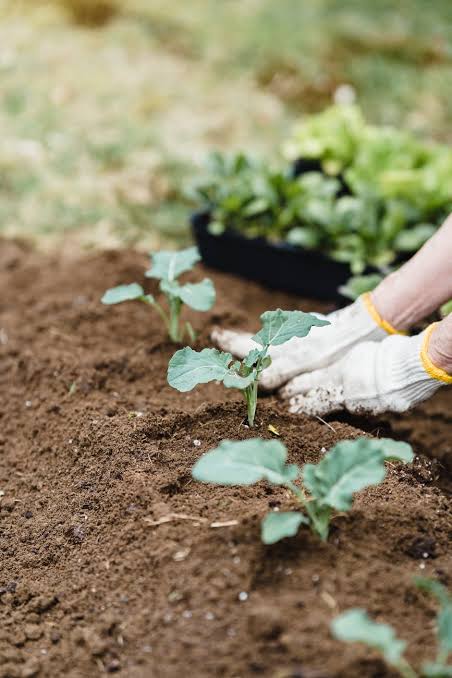If you’ve ever dreamed of harvesting your own fresh, flavorful vegetables straight from the garden, you’re in the right place! Gardening may seem intimidating at first, but with a few simple tricks, anyone — even complete beginners — can learn how to plant vegetables successfully. Whether you live in the United States, the United Kingdom, or Canada, these easy, beginner-friendly gardening tips will help you grow healthy, delicious produce right in your backyard or even on your balcony.🌿 Introduction: Why Start a Vegetable Garden?Learning how to plant vegetables for beginners is one of the most rewarding hobbies you can take up. It’s cost-effective, healthy, and therapeutic. Watching your plants sprout, bloom, and finally produce food you can eat brings immense satisfaction — plus, you’ll know exactly where your food comes from!This guide will walk you through simple tricks to plant vegetables successfully, from choosing the right seeds to caring for your plants throughout the season.🥕 Step 1: Choose the Right VegetablesThe first trick to successful vegetable gardening is choosing crops that are easy to grow and suited to your local climate. For beginners, start with low-maintenance vegetables that grow quickly and don’t require much experience.🌼 Best Vegetables for BeginnersTomatoes – Grow well in pots or garden beds and produce plenty.Lettuce and Spinach – Fast-growing and perfect for salads.Carrots and Radishes – Simple root veggies that grow easily from seeds.Zucchini – Very productive with minimal care.Peppers – Great for sunny spots and container gardens.Green Beans – Hardy and rewarding for new gardeners.Tip: Always check the growing season and frost dates for your region before planting.🌞 Step 2: Pick the Perfect SpotVegetables love sunlight — most need at least 6–8 hours of full sun daily. When choosing your planting area, look for a spot with:Good drainage (water shouldn’t pool after rain)Rich soil full of organic matterShelter from strong windsIf you don’t have a backyard, don’t worry! You can still grow veggies in containers, raised beds, or vertical planters on a balcony or patio.🌱 Step 3: Prepare the SoilHealthy soil means healthy plants. Before planting, loosen the soil to about 8–10 inches deep and mix in compost or aged manure. This boosts nutrients and improves texture.🪴 Quick Soil Tips for BeginnersTest your soil’s pH — most vegetables prefer slightly acidic soil (6.0–7.0).Add organic fertilizer if needed.Avoid using chemical-heavy soil — natural compost works best.Tip: You can buy affordable vegetable garden soil mixes at local garden centers if you’re just starting out.🧅 Step 4: Learn the Art of PlantingEach vegetable has its own preferences for planting depth, spacing, and timing. Always read the instructions on your seed packets or seedlings before planting.🌾 Basic Planting GuidelinesSeeds: Plant twice as deep as their size (tiny seeds barely under the soil).Seedlings: Gently loosen roots before planting to encourage growth.Spacing: Leave enough room for air circulation and sunlight.For example:Lettuce – 8 inches apartTomatoes – 18–24 inches apartCarrots – 2–3 inches apart💧 Step 5: Water the Right WayWatering is one of the most crucial tricks to plant vegetables successfully. Overwatering can drown roots, while underwatering can cause stunted growth.🌦 Watering TipsWater deeply but less frequently (2–3 times per week).Morning watering is best — it prevents evaporation and mildew.Use a soaker hose or watering can for gentle watering.Pro Tip: Stick your finger into the soil — if it’s dry 1 inch below the surface, it’s time to water!🌾 Step 6: Feed and Support Your PlantsVegetables are heavy feeders. To ensure they grow strong and produce plenty, use a balanced organic fertilizer every few weeks during the growing season.For tall plants like tomatoes, cucumbers, or beans, use stakes or cages for support. This keeps plants upright, promotes airflow, and prevents rot.🪲 Step 7: Keep Pests Away NaturallyEven the best gardens can attract unwanted guests. But don’t panic — there are easy, natural ways to protect your veggies.🐞 Natural Pest Control TricksPlant marigolds or basil near your vegetables — they repel pests.Use neem oil spray or soapy water to treat aphids and mites.Attract ladybugs and bees, which help control pests and pollinate.Remove weeds regularly to prevent pests from hiding.🍅 Step 8: Harvest at the Right TimeThe most exciting part of learning how to plant vegetables for beginners is finally harvesting! Timing matters — picking too early can mean smaller yields, while waiting too long can make veggies tough or bitter.Tomatoes: Harvest when fully red and slightly soft.Lettuce: Pick outer leaves when they’re 4–6 inches tall.Carrots: Pull when about ¾ inch thick at the top.Zucchini: Harvest when 6–8 inches long for tender results.🌼 Step 9: Keep Growing & ExperimentingDon’t stop after your first harvest! Gardening is all about learning and experimenting. Try new vegetables each season, rotate your crops to prevent soil depletion, and take notes on what grows best in your area.With each season, you’ll gain confidence and experience — and your garden will thrive even more beautifully.🌻 ConclusionPlanting your own vegetables doesn’t need to be complicated. With these simple tricks to how to plant vegetables for beginners successfully, you’ll soon enjoy the satisfaction of watching your seeds turn into healthy, delicious produce.Start small, stay patient, and give your plants consistent care — and before you know it, you’ll have a flourishing garden full of homegrown goodness.So grab your gloves, dig in the dirt, and let your gardening journey begin today! 🌱🥕🌞Keywords used naturally: simple tricks to how to plant vegetables for beginners successfully, vegetable gardening tips, how to grow vegetables at home, beginner gardening guide, easy vegetable garden, home garden for beginners, how to start planting vegetables.

